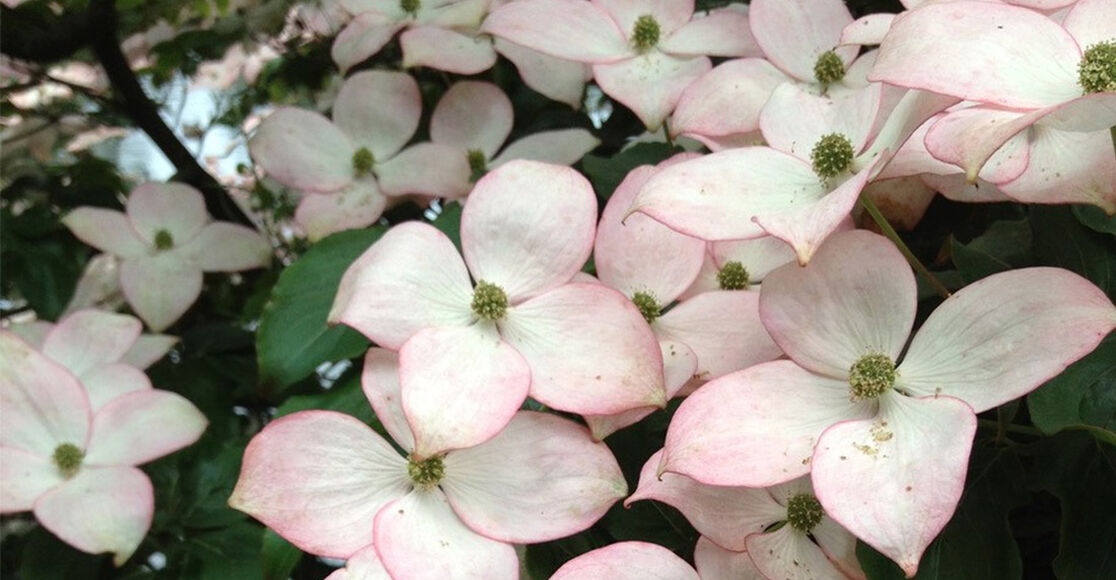Niki Jabbour
Spring shrubs like lilacs, rhododendrons and forsythias often get all the attention as gardeners are so happy for colour after a long winter. That said, there are also many low-care, long-flowering, and gorgeous small trees and shrubs to keep that show going from early to late summer. Here are eight you may want to add to your landscape this year.
Viburnum ‘Summer Snowflake’ (zones 5 to 8)
A ‘Summer Snowflake’ viburnum in full bloom is a spectacular sight with tiers of branches smothered in showy white lacecap flowers. They grow up to eight feet tall and eight to ten feet wide and make an eye-catching specimen plant or dense deciduous hedge. Expect three season of interest with the flowers, form, and fruits.
Potentilla (zones 2 to 7)
Among the easiest and most of carefree of the summer flowering shrubs, potentilla flowers for months, not weeks. The plants are compact, with most growing just two to four feet tall and are drought, disease, deer, and insect resistant, as well as forgiving of less-than-ideal soil. Plant them in mixed borders, rock gardens, along pathways, as a low hedge, or on slopes. Flower colours include yellow, white, pink, red and orange.
Kousa Dogwood (zones 5 to 8)
Kousa dogwood is among my favourite trees, and for good reason, it’s hardy, long-flowering (up to six weeks!), offers edible fruits, and has a unique vase-shaped form. It grows fifteen to twenty feet tall and wide, and flowers from mid to late June through July. The bold white or pink ‘flowers’ aren’t actually flowers but bracts that surround the true flowers, small greenish-yellow blooms. Kousa dogwoods are bold, beautiful, and easy to grow, offering four season interest to the landscape.
Mock Orange (zones 4 to 8)
I grew up with a mock orange in the yard and when it would bloom in early summer, my mother would fill vases around the house with bouquets of the fragrant flowers. This is a perfect shrub for a pollinator garden as bees and beneficial insects are attracted to the citrusy fragrance. Mock orange shrubs grow up to ten feet tall and wide, but there are many compact cultivars available for small space gardens.
Butterfly Bush (zones 5 to 9)
In my region, butterfly bush is more like a perennial, dying back to the ground in winter and emerging again the following late spring. And when in full bloom, it’s a stunner with arching branches topped by long spikes of purple, white, lavender, and pink. As the name suggests, butterflies (and bees!) do adore the flowers. This plants needs full sun and excellent drainage so, I plant in raised beds and don’t add additional compost or soil amendments.
Japanese Spirea (zones 4 to 8)
Japanese spirea shrubs are hardy and low-care, often used for mass plantings, mixed borders, and low hedges. They can reach heights of six or seven feet, but most are compact and form a tight mound about four feet by four feet. They prefer full sun, but will still bloom, a bit more modestly, in partial shade. The pretty, fluffy flat-topped flowers are pink or white and beloved by butterflies. One note is that this shrub can re-seed so if you see spirea babies popping up in your garden, pull them out before they become established.
Rose of Sharon (zones 5 to 8)
Rose of Sharon offers the last great hurrah of the summer garden with the large trumpet-shaped flowers opening in late summer. This shrub grows best in full sun and well-drained soil and can take a year or two to settle in. It grows eight to ten feet tall but just four to five feet wide. Once established, it will flower for weeks in August and September. The flowers can be white, red, or lavender and attract hummingbirds and butterflies.
Paniculata Hydrangea (zone 3 to 8)
Every garden needs a few paniculata hydrangeas. They light up the mid to late summer landscape with huge, cone-shaped flowers in white, lime green, soft pink, and deep pink. The flowers are super long-lasting, often changing colour as they age. They can also be cut and used for dried arrangements. Panicle hydrangeas thrive in partial shade to full sun and, depending on the cultivar, can grow as compact as eighteen inches or as tall as ten feet. My favourite cultivars include ‘Limelight’, ‘Bobo’, and ‘Pinky Winky’.
